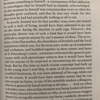Podcast
Questions and Answers
What is the significance of centrifugation?
What is the significance of centrifugation?
- To purify mammalian cells only
- To study the effects of centrifugal forces on cells (correct)
- To separate two immiscible substances
- To study the effects of gravitational forces on cells
What is an application of centrifugation in the purification of biological molecules?
What is an application of centrifugation in the purification of biological molecules?
- Salting out with Ammonium sulfate precipitation (correct)
- Removing fat from milk to produce skimmed milk
- Separation of particles from an air-flow using cyclonic separation
- Fractionation of subcellular organelles
What is dialysis used for?
What is dialysis used for?
- To purify mammalian cells
- To separate two miscible substances
- To separate dissolved molecules based on molecular weight (correct)
- To separate particles from an air-flow using cyclonic separation
What happens to macromolecules in a dialysis bag?
What happens to macromolecules in a dialysis bag?
What is an advantage of dialysis?
What is an advantage of dialysis?
What is a disadvantage of dialysis?
What is a disadvantage of dialysis?
What is the purpose of a semi-permeable membrane in dialysis?
What is the purpose of a semi-permeable membrane in dialysis?
What happens to small molecules in a dialysis process?
What happens to small molecules in a dialysis process?
What is the result of dialysis at equilibrium?
What is the result of dialysis at equilibrium?
What can dialysis be used for in characterization studies?
What can dialysis be used for in characterization studies?
What is a common feature of centrifugation and dialysis?
What is a common feature of centrifugation and dialysis?
Which of the following is NOT an application of centrifugation?
Which of the following is NOT an application of centrifugation?
What is the primary function of a dialysis bag?
What is the primary function of a dialysis bag?
Why is dialysis still in use today?
Why is dialysis still in use today?
What is the result of centrifugal forces on cells?
What is the result of centrifugal forces on cells?
Which of the following is an application of centrifugation in the food industry?
Which of the following is an application of centrifugation in the food industry?
What is the purpose of the buffer in dialysis?
What is the purpose of the buffer in dialysis?
What is a disadvantage of dialysis?
What is a disadvantage of dialysis?
Which of the following is NOT a characteristic of centrifugation?
Which of the following is NOT a characteristic of centrifugation?
What is a common application of centrifugation in forensic and research laboratories?
What is a common application of centrifugation in forensic and research laboratories?
Flashcards are hidden until you start studying
Study Notes
Centrifugation
- A modern and easy technique of separation that allows for the separation of cellular and subcellular components
- Used to study the effects of centrifugal forces on cells
- Applications:
- Separate two miscible substances
- Analyze the hydrodynamic properties of macromolecules
- Purify mammalian cells
- Fractionate subcellular organelles (including membranes/membrane fractions) and membrane vesicles
- Separate chalk powder from water
- Remove fat from milk to produce skimmed milk
- Separate particles from an air-flow using cyclonic separation
- Clarify and stabilize wine
- Separate urine components and blood components in forensic and research laboratories
- Aid in the separation of proteins using purification techniques such as salting out (e.g. Ammonium sulfate precipitation)
Dialysis
- An operation to separate dissolved molecules based on molecular weight
- Uses a dialysis bag with a semi-permeable membrane to separate small molecules from macromolecules
- Process:
- A biological sample is placed inside a tube of semi-permeable membrane
- The tube is placed inside a much bigger container with a concentrated solution
- Small molecules diffuse through the membrane, while macromolecules remain in the bag
- At equilibrium, the concentration of small molecules is the same inside and outside the membrane
Advantages of Dialysis
- Simple and effective for large-volume samples
- Useful for characterization of a candidate drug in serum binding assays or detailed study of antigen-antibody interactions
- Most accurate method available
- Inexpensive and easy to perform
Centrifugation
- A modern and easy technique of separation that allows for the separation of cellular and subcellular components
- Used to study the effects of centrifugal forces on cells
- Applications:
- Separate two miscible substances
- Analyze the hydrodynamic properties of macromolecules
- Purify mammalian cells
- Fractionate subcellular organelles (including membranes/membrane fractions) and membrane vesicles
- Separate chalk powder from water
- Remove fat from milk to produce skimmed milk
- Separate particles from an air-flow using cyclonic separation
- Clarify and stabilize wine
- Separate urine components and blood components in forensic and research laboratories
- Aid in the separation of proteins using purification techniques such as salting out (e.g. Ammonium sulfate precipitation)
Dialysis
- An operation to separate dissolved molecules based on molecular weight
- Uses a dialysis bag with a semi-permeable membrane to separate small molecules from macromolecules
- Process:
- A biological sample is placed inside a tube of semi-permeable membrane
- The tube is placed inside a much bigger container with a concentrated solution
- Small molecules diffuse through the membrane, while macromolecules remain in the bag
- At equilibrium, the concentration of small molecules is the same inside and outside the membrane
Advantages of Dialysis
- Simple and effective for large-volume samples
- Useful for characterization of a candidate drug in serum binding assays or detailed study of antigen-antibody interactions
- Most accurate method available
- Inexpensive and easy to perform
Studying That Suits You
Use AI to generate personalized quizzes and flashcards to suit your learning preferences.





